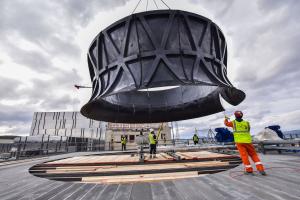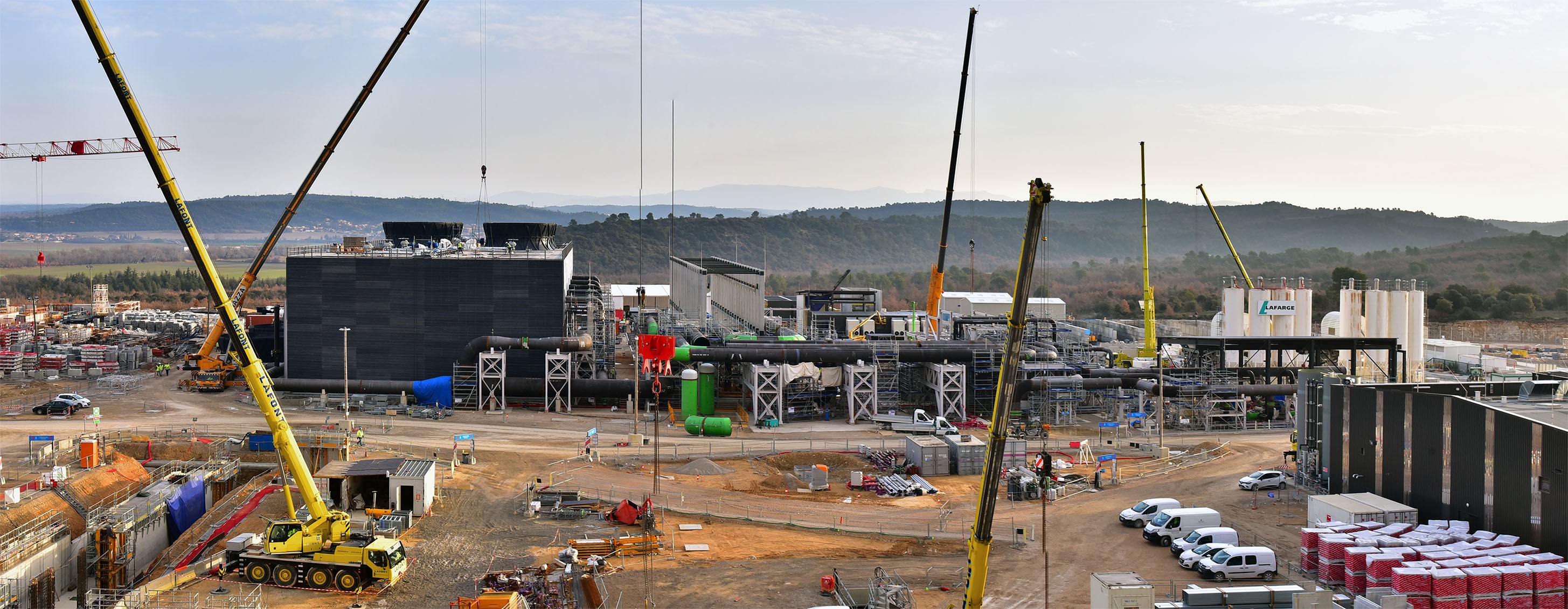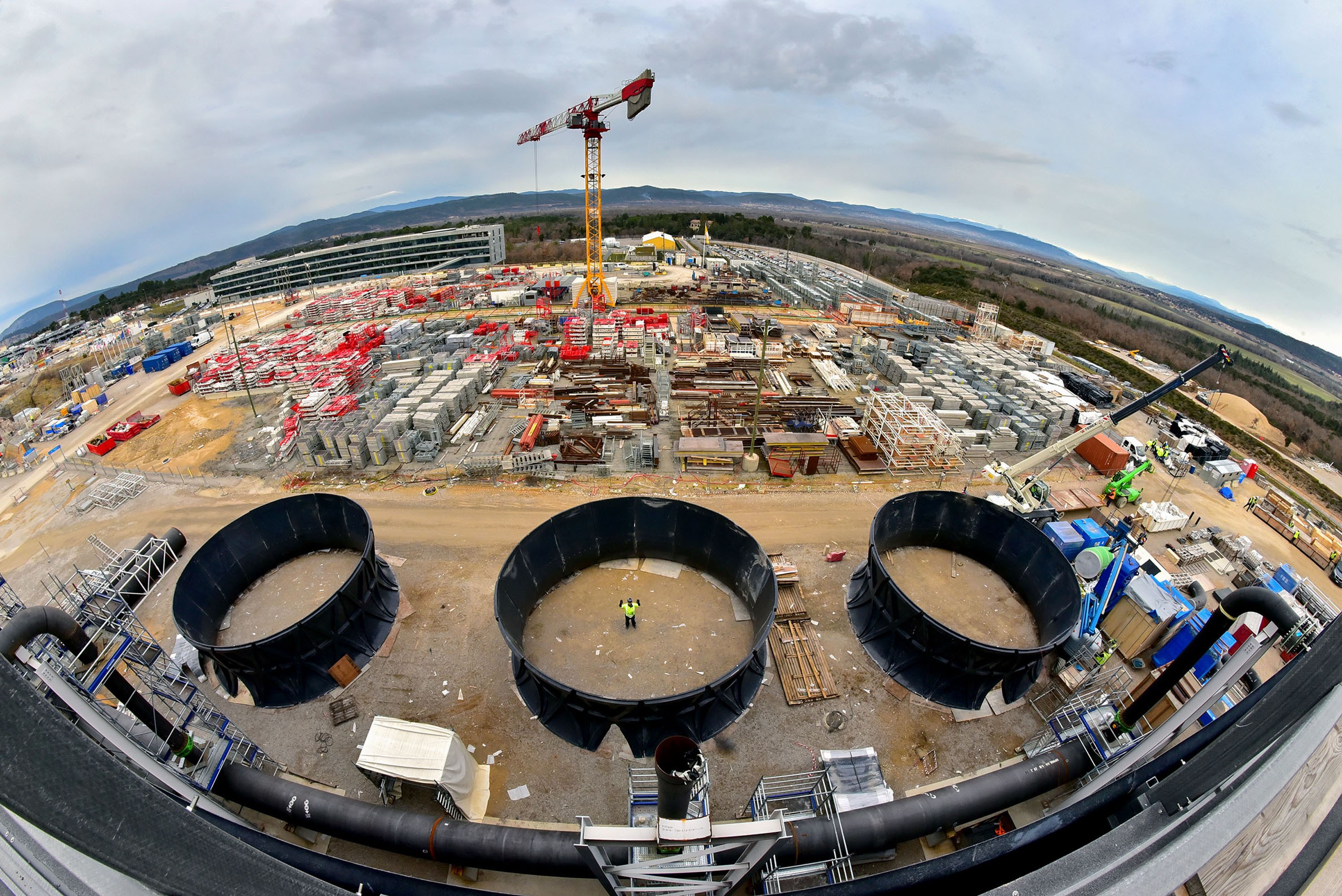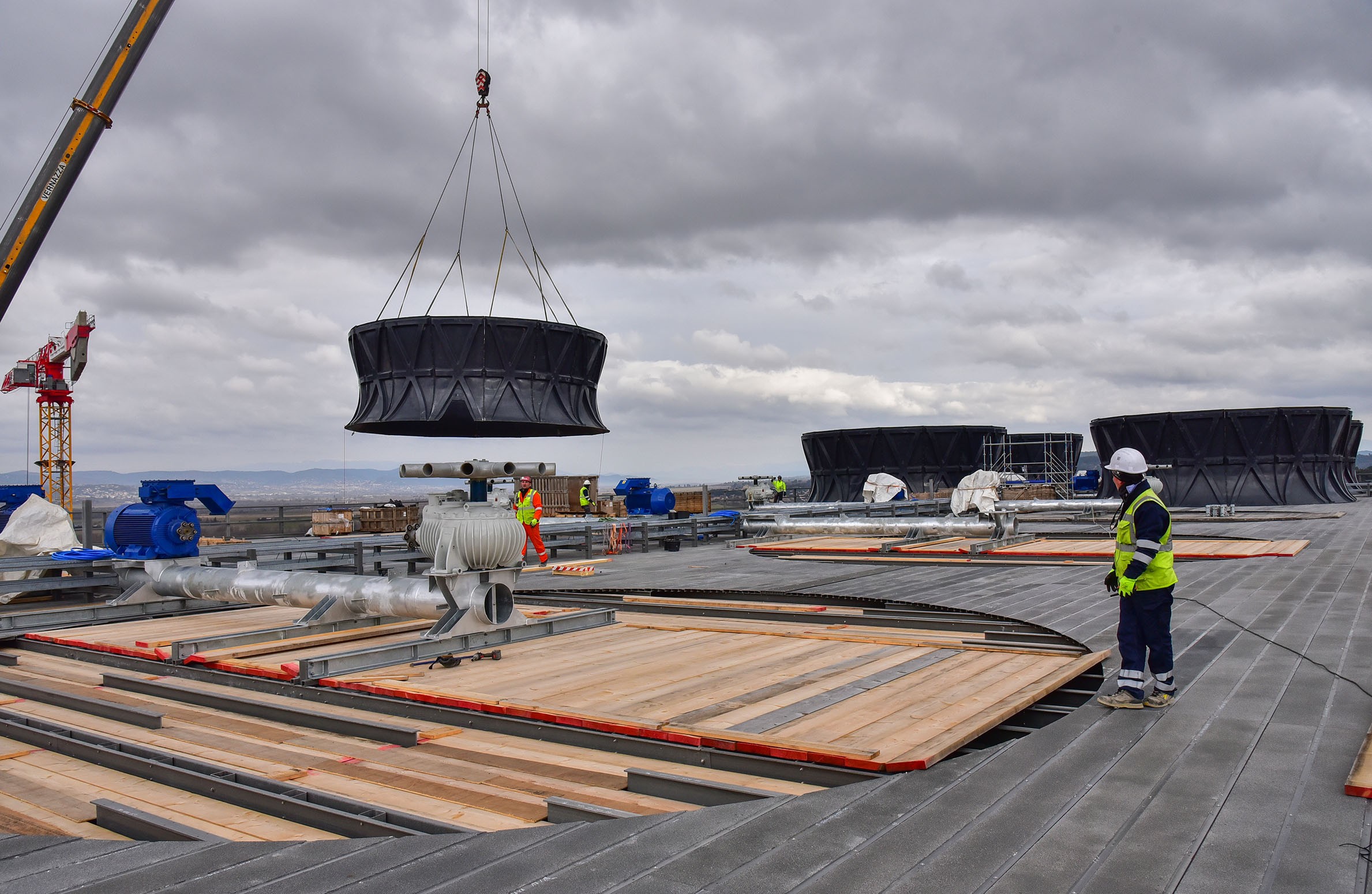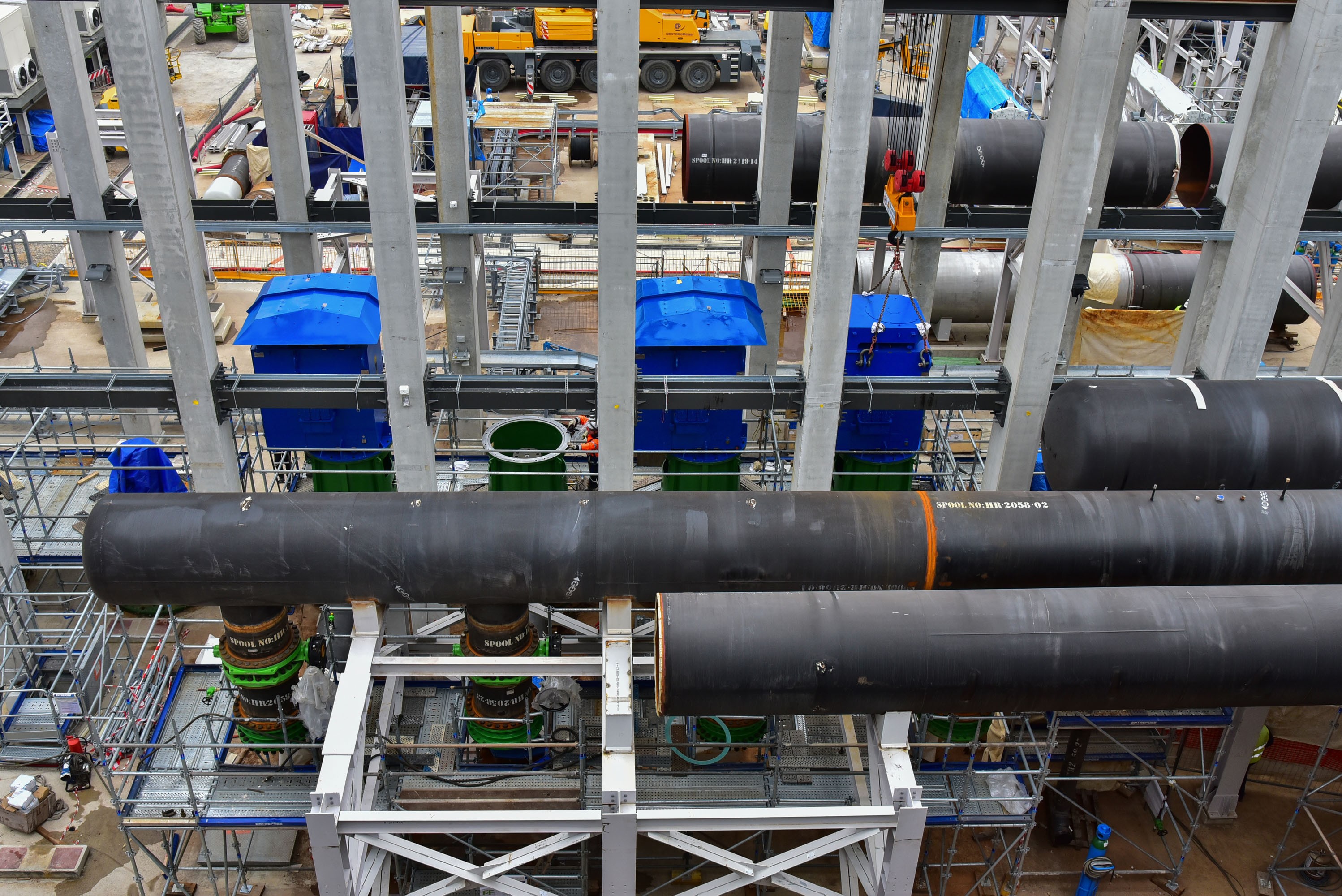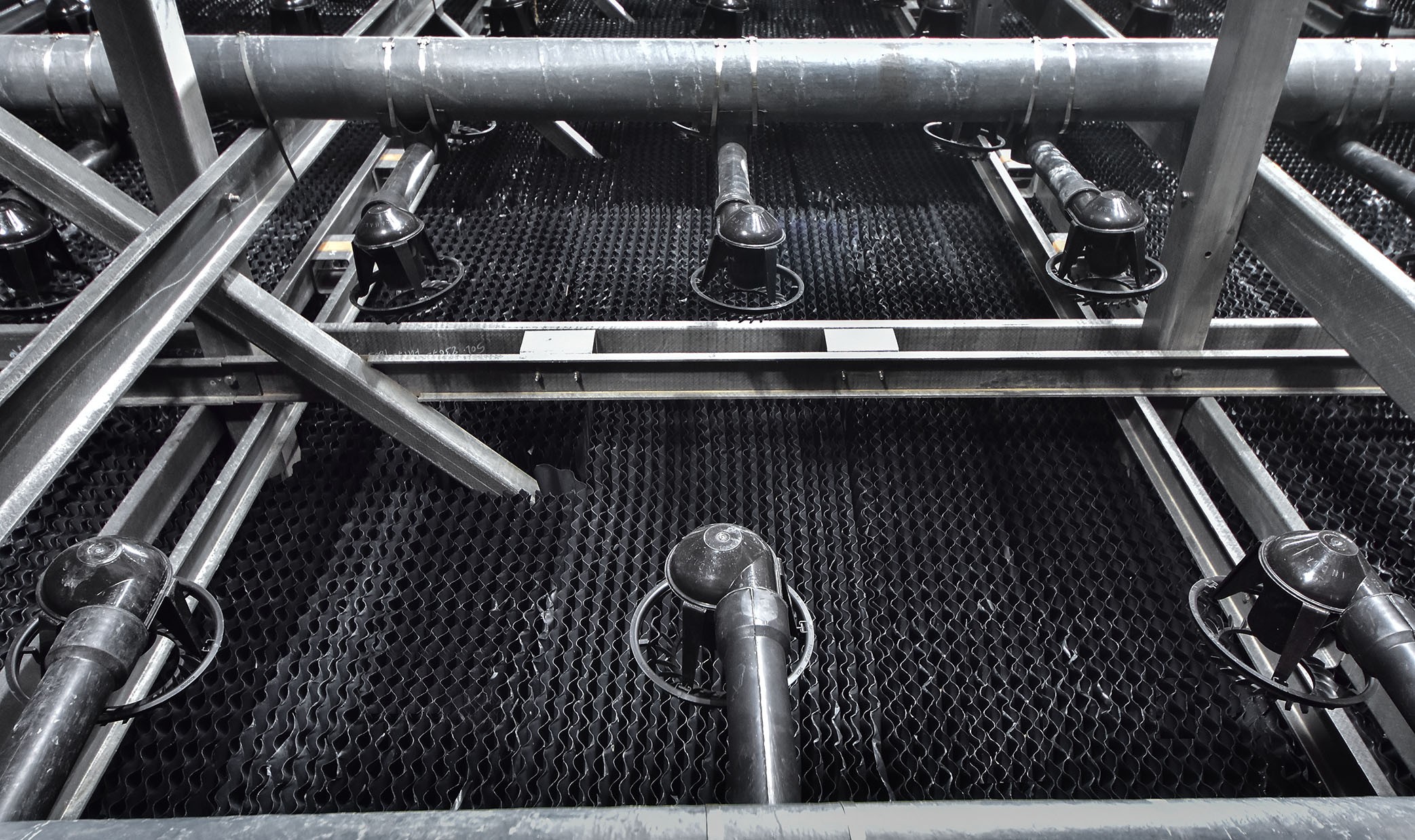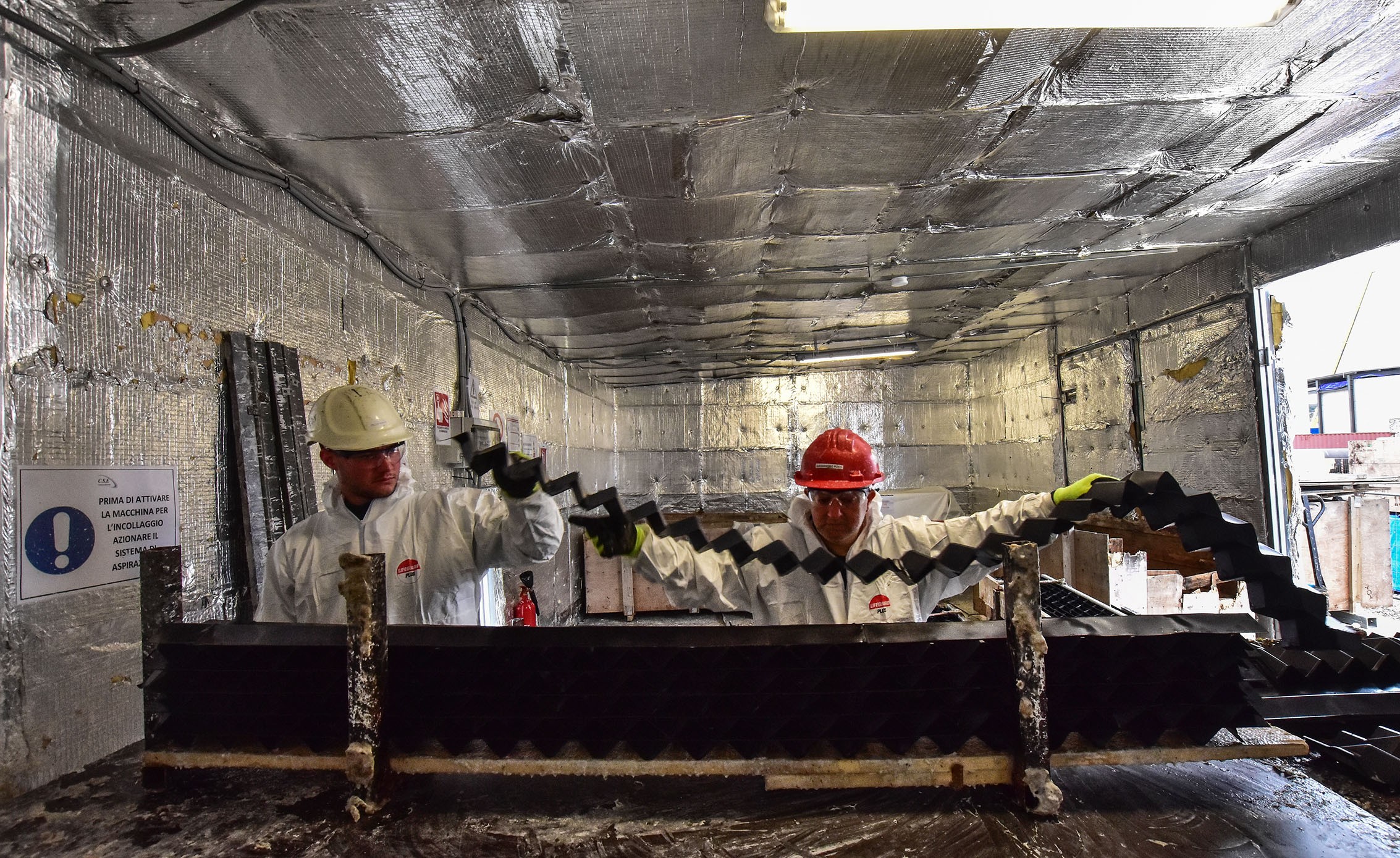The droplets and mist lifted by the draft must be recaptured to bring the "drift losses" to an acceptable level. Thousands of "drift eliminator" units at the top of each cell, above the spray nozzles and the 1.6-metre-thick stacked fill pack, provide a dense, zigzagging labyrinth (see photo) that causes droplets to change direction, lose velocity and fall back into the cooling tower, significantly reducing the drift losses.
At the end of the process the water, now considerably cooler than when it entered the cells (27 °C), falls into the cold basin under the towers. From there, it is transported by huge vertical pumps to the different heat exchangers of the system, where it goes back to cooling the plant systems and the Tokamak secondary loop.
And the cycle repeats itself endlessly, extracting and rejecting the massive quantity of heat generated by the tokamak, its auxiliaries and the installation's plant systems. At full power the combined load that needs to be evacuated is of the order of one gigawatt, approximately half of it generated by the heat from the fusion reaction collected by the plasma-facing wall inside the vacuum vessel.
If ITER were an industrial fusion plant, the heat in the plasma-facing wall would be converted into electricity by way of steam generators, turbines and alternators. But as a research installation—with a non-steady-state experimental device—installing electricity-generating equipment would not have made sense.
On the roof of the squat black building that accommodates the cooling cells, seven out of ten funnel-like fan cylinders are in place. The remaining three are being assembled and will be lifted in the coming weeks. Inside the cells, 80 percent of the fill pack units are now stacked together under the spray nozzles, and about half of the 4,000 drift eliminator sheets are glued together and ready to be positioned above the fill packs, under the large fans.
¹ Pumped from the heat rejection system's hot basin (which acts as a heat dump) and from other plant services, the water enters the cooling cells at a temperature of 43 °C.

